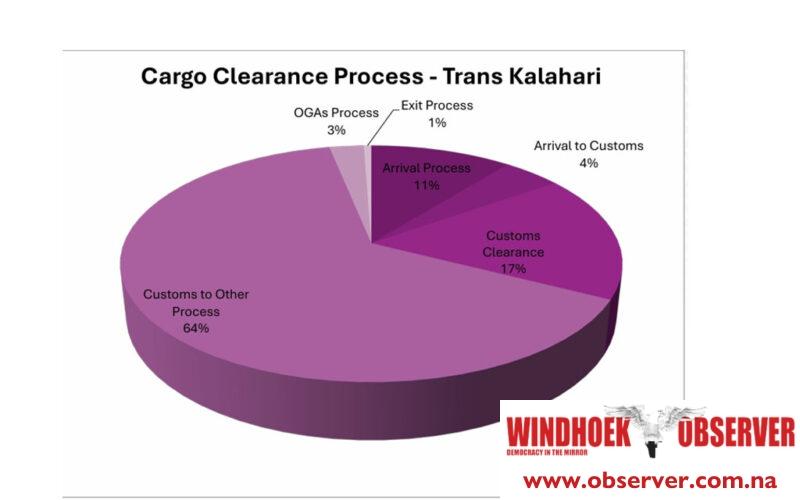CHAMWE KAIRA
The Trans-Kalahari Border Post between Namibia and Botswana must harmonise, standardise procedures, provide adequate and reliable information and come up with structural adjustments to adeduaretly cater for traffic. This is according to a recent study that was commissioned by the Namibia Revenue Agency and the Ministry of Industrialisation and Trade.
The study comes at a time when the two countries are planning to develop the Trans-Kalahari Railway project, a 1500-kilometre railway line aimed at linking Botswana’s mineral resources with Namibia’s Atlantic port at Walvis Bay.
The Namibian Ports Authority recently stated that the absence of rail connections to the key markets in Botswana and Zambia remains a major cause for concern and poses a serious risk to erode Namibia’s competitiveness as rail would offer a more cost-effective alternative to road.
The Trans-Kalahari Border Post study recommended the redesigning of the border and the location of the scanner in an area that allows the exit of trucks after scanning without going back into the process.
Furthermore, the study recommended the creation of separate lanes for vehicles going for scan and those exciting so that they do not make a single queue.
The border post is an important cargo clearance hub in Namibia as an entry point for cargo that comes by road and also handles goods in transit mainly to Angola and the Democratic Republic of Congo.
The Trans-Kalahari Border Post is one of the two land borders shared between Namibia and Botswana, the other one being the Ngoma border post.
Namibia has made a commitment to streamline clearance formalities and improve cross-border trade processes under the Trade Facilitation Agreement. The country is positioning itself as a transport and logistics hub to connect the Southern African Development Community (SADC) region to international markets.
The Trans-Kalahari Corridor is a significant transport corridor within Southern Africa, connecting the port of Walvis Bay to the rest of the SADC region and to international markets.
The study found that the average time for arrival clearance of imported goods, from the time the truck arrives at the border to the time a declaration is handed over to a customs officer for processing, is two hours and 32 minutes. The average time taken to submit documents to customs after the arrival of goods processes have been finalised is one hour and three minutes, the study showed.
The study found that average time taken to clear goods for export through Trans Kalahari border, from the time a truck arrives at the border at the Entry gate to the time the truck is released at the Exit gate is four hours and 34 minutes.
The average time taken by a clearing agent to register declaration after getting documents from the driver is one day, 15 hours and 5 minutes.
It is also paramount for NamRA to consider restructuring and harmonising the clearance processes in customs by developing a document processing centre.




